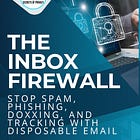Does Your Loyalty Card Saves You Money? Maybe Not.
Loyalty programs promise savings but deliver profiling, tracking, and unfair pricing.
Grocery loyalty programs seem like a win:
Swipe a card. Save a few bucks. Maybe unlock a digital coupon.
But what you’re really doing is handing over your shopping history in exchange for algorithmically targeted discounts.
Most of us understand that quid pro quo, and reluctantly go along for the savings. Nothing too ground breaking there.
But here’s a surprise that we’re just now learning:
the discounts are not as good as you think and may even be different than what your neighbor is getting.
If you've read our post on how e-commerce sites show different prices depending on your browser, location, or device, this might sound familiar. It should. This is the brick-and-mortar version of the same problem.
Online or offline, companies are deciding what you see (and what you pay) based on data about you. Adding insult to injury, the data is often wrong, to your detriment.
The Kroger Example: Profiling Gone Wrong
Recently, Consumer Reports shared a revealing look into how far this goes in the grocery world. A shopper in Oregon, Hazem Salem, used the state’s privacy law to request the data Kroger had on him.
What he got back: a 62-page profile.
It included assumptions about his education, income level, and shopping loyalty. Most of it was wrong. And because he didn’t shop at Kroger often, and preferred niche items like oat milk, he was flagged as a “non-loyal” shopper.
As a result, he received fewer and lower-value discounts.
That’s the real price of so-called “personalized savings.” If the profile Kroger builds on you says you’re not valuable (or says the wrong things), you may pay more than someone else shopping in the same aisle.
The Same Tricks, Everywhere You Shop
Whether it’s Kroger in the store or an e-commerce site online, the strategy is the same:
Track as much as possible
Infer details about who you are
Segment you into buckets
Price or discount accordingly
Online, that means:
Showing higher prices to people in wealthier ZIP codes
Offering steeper discounts to shoppers using older phones
Adjusting shipping rates based on device or browser
In-store, that means:
Sending digital coupons based on your past purchases
Filtering discounts by your assumed income or brand loyalty
Sharing your profile with third parties who might not play fair
You’ll never see a pop-up that says, “Because we think you earn six figures, this detergent costs $2 more.” But the effect is the same.
Why Bad Data Leads to Bad Outcomes
What makes this even worse is how often the data companies use is inaccurate.
In Salem’s case, Kroger thought he had less education than he does and earned far less than he actually does. That faulty profile determined what he saw, what he didn’t, and what he paid.
Now imagine that same bad data flowing downstream:
Into ad networks that decide which products you're targeted with
Into health platforms that infer your dietary needs
Into tobacco marketing databases, as happened in Salem’s case
Once a false profile gets built, it's nearly impossible to fix, and even harder to stop from spreading.
Regular readers and followers know we're a fan of using fake or "wrong" data. It's an effective strategy to confuse profilers, stalkers and doxxers. That is not cost free strategy though, as we see in the Kroger loyalty program example.
No perfect solutions, only tradeoffs, as we like to say.
What Can You Do About It?
Retailers want you think that you only have two choices: provide your information or lose out on discounts. But there are other options to choose from.
1. Skip the loyalty card (or limit what you link to it)
Ask whether the card is even needed for the sale price. A decent number of stores honor the discount if you ask or use a store-provided card.
2. Use a burner identity
If you must sign up, create a minimal data profile:
Use a disposable email (SimpleLogin, DuckDuckGo, AnonAddy)
Use a non-primary phone number
Don’t link your real address unless required
3. Don’t pay with trackable cards
Use cash, or virtual cards from Privacy.com or your bank’s masked card option, to prevent payment data from linking you to a larger data graph.
4. Request your data if your state allows it
If you’re in California, Texas, Oregon, or 10 other states with consumer-friendly privacy laws, you can see what data companies have on you. With this information, you can, depending on the laws of each state:
Fix inaccurate information
Opt out of sale or sharing
Ask for full deletion
5. Prefer stores that don’t profile
Chains like ALDI don’t have loyalty programs. They keep pricing straightforward, don’t sell your data, and often beat data harvesting chains on price anyway.
The Bigger Picture: Privacy and Pricing Are Linked
Keep reading with a 7-day free trial
Subscribe to Secrets of Privacy to keep reading this post and get 7 days of free access to the full post archives.




